With the second Test bound to take centre stage later this week, I thought now would be an ideal time to take a trip down memory lane and remember an English cricketing hero from the past. Everyone knows the story of Bodyline, of course. But not everyone knows the broader history of Harold Larwood. And Stuart Broad thought he was badly treated! Here’s young writer Rahul Palaninathan’s account …
During this pandemic, I’ve gluttonously devoured mountains and mountains of variously genred books from Steve Jobs to Brett Lee. However, the books I am most interested in, perhaps unsurprisingly, are cricket autobiographies and biographies. While browsing for my next reading adventure to explore, a name grabbed the attention of my eye: Harold Larwood written by Duncan Hamilton.
Larwood, of course, was the main architect of destruction in the 1932 Ashes. He used his blinding speed to paralyze the Aussie batsmen and instil fear into their hearts. To achieve this tier of intimidation, Larwood carried out an ideology named, rather archaically, “leg theory” or Bodyline. This strategy cramped the batsman’s arc to play on the leg-side which resulted in a lollypop catch for close fielders. However, as simple as it may sound, leg theory demanded an unerring accuracy and searing pace. Harold Larwood certainly had both…
Most people only have a limited knowledge of Larwood and Bodyline. And whatever scraps of knowledge they have is blurred, vague, and results in a misconception. Bodyline was not, in fact, a tactic used to deliberately injure the batsmen or intimidate them. And Larwood was certainly not the devil incarnate.
On the other side, people often see the Australians as angelic, the epitome of sportsmanship, whose main protagonist was the immortal deity of Sir Donald George Bradman, a man who could do no wrong on the field or off it. The Australians were the innocent men who stood for justice as they valiantly fought off the unlawful British with their monstrous spearhead. Little do they know that this perception is woefully wrong…
As I discovered with upmost disbelief, one could actually argue that the ‘angelic’ Aussies were the real villains of Bodyline. They were physically and mentally bullied by Larwood’s prodigious pace and looked for excuses when they couldn’t cope. Meanwhile, common perceptions of Don Bradman, the messiah of Australian cricket, were also erroneous. The Don was portrayed by the media as an amiable and charming young man who, as a result of his rags to riches background, symbolised the Australian optimism that one day they too might achieve something great in this world.
However, this meticulously cultivated media image was nowhere near the appropriate representation of the authentic Don Bradman: he was a remote personality, even to his teammates, and tended to be quite egocentric and narrow-minded. Even his teammates were said to have “loathed” him because of his self-centred characteristics. These characteristics came to the fore when he was put under pressure by Larwood’s incredible prowess.
Put simply, The Don’s ego could not accept that he had been somewhat neutralised by Larwood. Although he still had a respectable average of 54 for the series (an average that an ordinary batsman would joyfully accept) he and the Australian team decided to accuse the English of cheating. No one dared to oppose the blemishless Bradman. On the other hand, the English team, Larwood and Jardine in particular, were crucified by the Australian public for abolishing the sacred spirit of the game and diminishing cricket permanently.
However, before you jump you to conclusions that the English deserved this foul treatment, you must understand where the Brits were coming from. If they wanted to win the Ashes, they had to find a consistent and reliable method of getting Don Bradman out. Otherwise the English fielders would’ve been reduced to mere spectators applauding Bradman as he demonstrated his efficiency with the bat.
Douglas Jardine, the English captain, understood this from the outset. He soon learned that Bradman was somewhat awkward when the ball jagged into his ribcage; therefore he devised a hypothesis to exploit his only weakness. After devising leg theory, Jardine needed a man with the suitable speed and skill to carry out the carnage. Harold Larwood was the man for the job as he had showcased his prowess with terrifying performances for Nottinghamshire.
Harold Larwood, as loyal as a dog, obeyed his captain’s order with dignity as he too realised that the only way of defeating the Australians was to expose Don’s weakness. We all know what happened next…
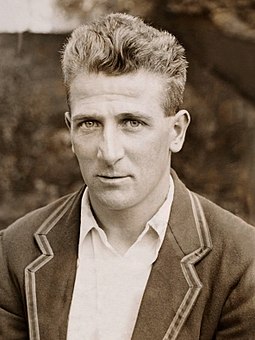
In the aftermath of the Bodyline series, Larwood’s public image soared to unimaginable heights as the whole of England celebrated his success. But Larwood, never one to bathe in glory or the limelight, was simply looking forward to playing more Test cricket. Sadly, however, this simple pleasure was slowly but surely taken from him…
Before the 1934 Ashes, the Australians wanted a guarantee that Bodyline would not recur. They threatened to boycott the series unless Harold Larwood published an unreserved apology for bowling leg theory. The MCC was aghast; the Ashes were such a vital component in their financial income and without it they would be in utter ruins. Hesitantly, therefore, they obliged with the Australian’s proposal. But predictably, and quite rightly, Larwood refused to say sorry.
Just imagine being in Larwood’s shoes. He was a proud man steeped in moral principles. He had a sound set of values. So why should he apologise for doing something that was within the laws of the game? Apologising would look like an admittance of guilt. His response to the audacious MCC request was therefore clear: he said his mother would die if she found out that her son had apologised.
Larwood’s treatment was even more bizarre because Jardine was still allowed to play. Why? Because he was an amateur and a well-respected figure in society. Larwood, however, was a professional. How times have changed…
After this fiasco, Larwood was banished to county cricket and never represented his country again. He enjoyed a few seasons of success on the county circuit, but immeasurable strains on his wailing body eventually proved too much. He was therefore unable to deliver the ball at the same velocities and retired at just 32 years of age. His first class statistics show just how good he was: 1427 wickets at an average of just 17.51. Extraordinary.
Post-retirement, Larwood desired a silent life devoid of any unnecessary controversy and unwanted attention. To achieve this goal, he bought an inconspicuous sweets shop in Blackpool that was blandly named Collins. Everything about the place was unspectacular and commonplace. There was nothing to suggest this humble shop was the livelihood of one of the quickest bowlers ever.
After a few years as a shop keeper, Larwood needed a change in scenery and so, on the recommendation of a friend, he migrated to Australia – the country that had hated him for so long ago. Luckily, however, the Aussies came to accept Larwood and gave him the peace he craved.
Towards the end of his years, Larwood visited Lord’s one final time. He walked through the long room searching for a portrait of himself. He found one of Don Bradman, his greatest rival, and he found one of Douglas Jardine, his greatest ally, but he could not find a portrait of himself. How typical.
In my opinion, the real crime against Larwood was not the abuse he received during Bodyline. It was, in fact, the treatment he received by his own country after it. Larwood could have been the most outstanding fast bowler in cricket’s history. He had the speed, the stamina, the accuracy, the temperament and the dedication to his craft. He had the whole world at his feet. He could have been the bowling equivalent of Don Bradman.
But the MCC stopped this from happening. English cricket should have nurtured Larwood and provided him with the platform to maximise his potential. But instead they attempted to humiliate him by making him apologise for a crime he did not commit.
When he was performing at his customarily high level on the county circuit, Larwood was ignored and and eventually lost his love for the game. The MCC therefore destroyed the most lethal weapon they had at their disposal and blocked his path to sporting greatness.
Whether you’re English or Australian – and whether you agreed with Bodyline or not – surely we can all agree that one of the greatest injustices of the whole affair was the heartless ruination of this wonderful fast bowler’s career. No wonder so many England bowlers have complained that it’s a batsman’s game.
Rahul Palaninathan
You can see more of Rahul’s work at The Slower Ball Blog



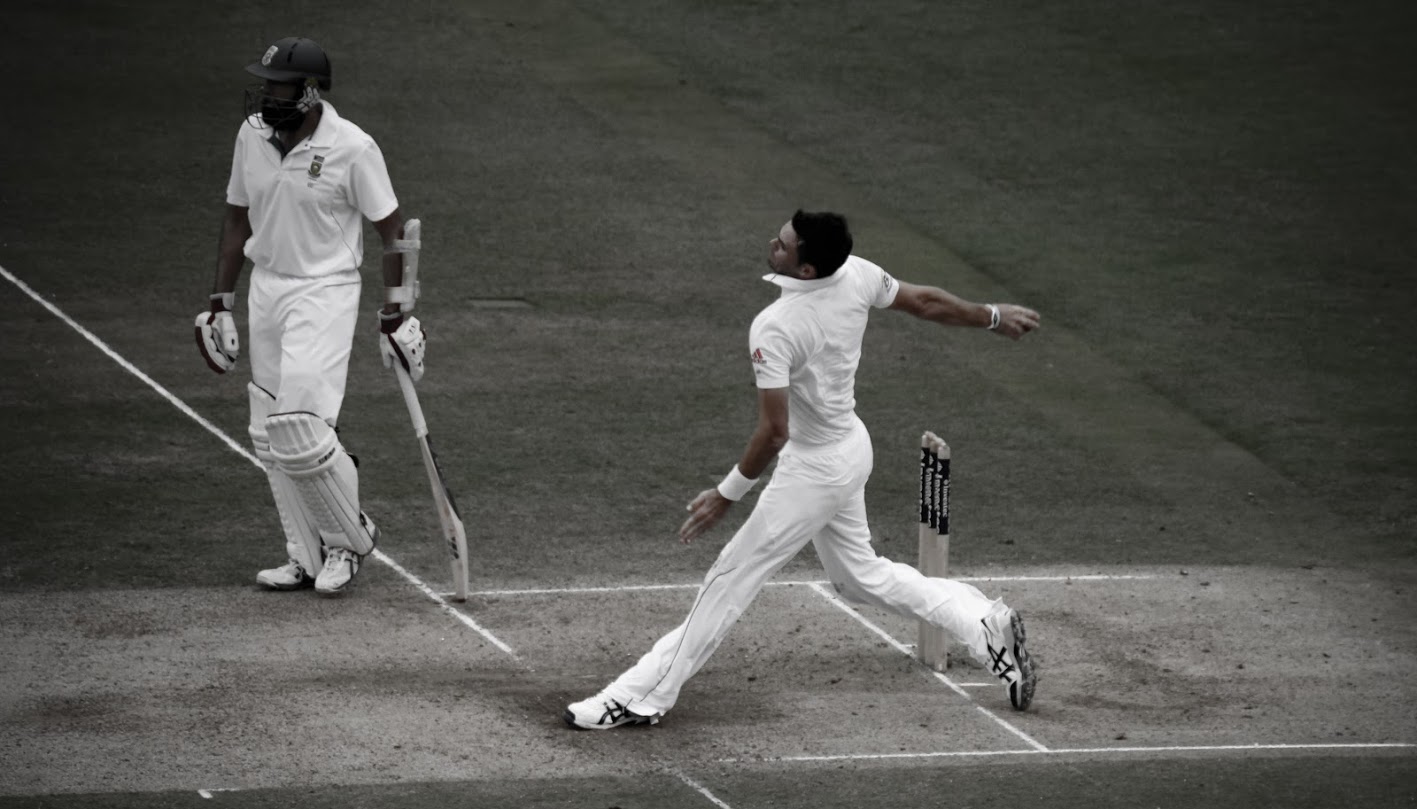
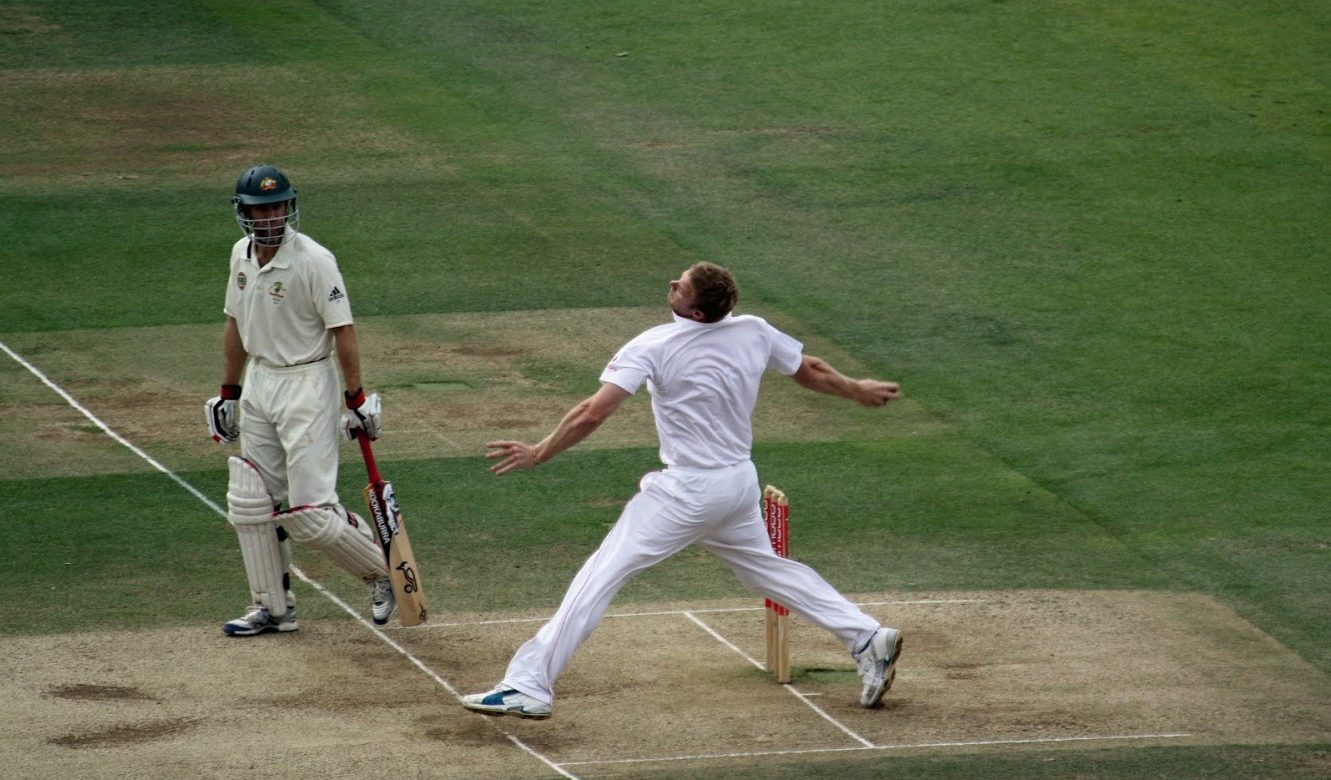
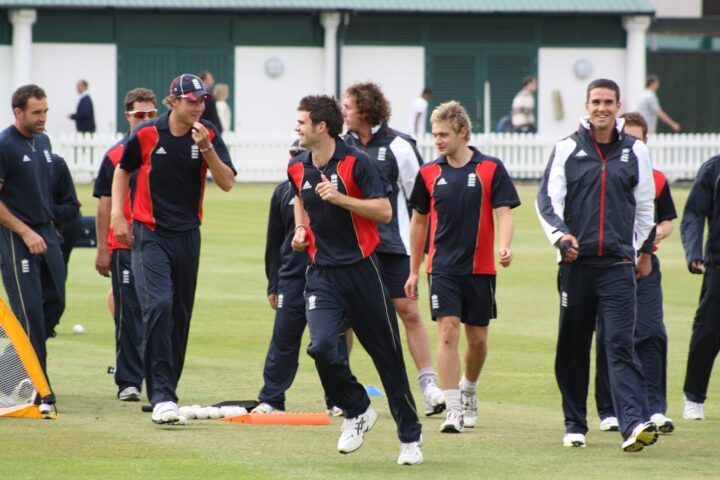
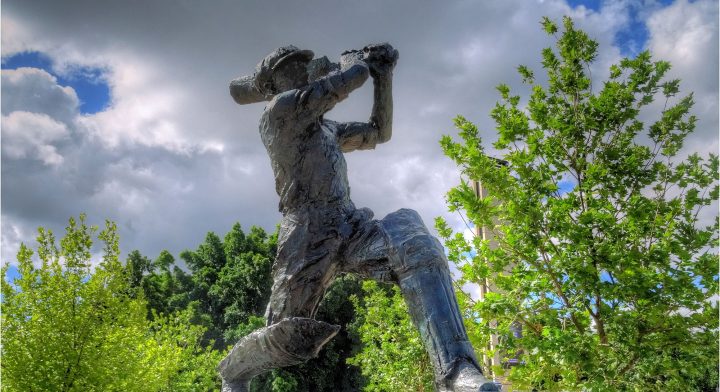


Another point – note the timing of the first Aussie complaints – not match 1 when Stan McCabe scored 187 in an Aussie defeat, nor match 2 when Bradman scored a ton in an Aussie victory, but deep into match 3, with Australia booked for a heavy defeat and none of their batters having scored anything of significance. It was only when it started becoming clear that they were hopelessly outgunned that they began to whinge. Also note that they could have fought fire with fire (or attempted to at least) – they had Laurie Nash, ‘Bull’ Alexander and Eddie Gilbert all available as fast bowlers (the first named reckoned that he could have put a stop to bodyline in two overs given the opportunity, while the third named would have been the first aborigine to play test cricket – an honour that ended up going to Jason Gillespie six decades later).
Of course, as always, the villains are the MCC.
Their treatment of Larwood was every bit as shameful as the treatment they tried to mete out to D’Oliveira 36 years later.
And while I can’t claim that KP suffered anything close to what those two had to put up with, his treatment at the hands of the English Cricket Establishment had echos of those former affairs.
Great read. That biography of Larwood is a great read. From memory Jardine also hastened Larwood’s demise by insisting he play in the final test when he still was injured.
But Larwood’s treatment by the MCC was appalling. It is actually a disgrace if he still does not have a portrait at Lords.
I still love watching his bowling action. So smooth and rhythmical.
Larwood’s action in grainy b&w is still a thing of beauty (try watching some film of Bill Voce in comparison!).
Curious how many important players in that series were members of a certain secretive fraternal organistion: Jardine and Bradman most obviously but also that I’ve been able to find confirmation of, Herbert Sutcliffe, Bertie Oldfield and Bill Bowes (who bowled Bradman for a duck). There’s also Bradman’s mysterious absence from the First Test (I don’t think he missed any other Test in his career). There’s more to this story than is in any of the legion of books about it.
It was a little more than him wanting a change and emigrating to Australia. He hit financial problems and it was his ex-opponents Fingleton and (I think) either Oldfield or McCabe who persuaded him to move and fixed him up with housing and a job when he reached Australia. The Australians did a lot more for him than anyone in English cricket.
On a different matter, I love the story about Bradman being out for a duck in his last test innings and Fingleton and O’Reilly (in the press box) celebrating wildly because of their personal dislike of him. It makes the grudges against the likes of Lord Geoffrey and Pietersen pale into insignificance.
Ha! Fingleton and O’Reilly were Catholics and Bradman (a protestant) loathed them. The dislike was mutual. The Don was very far from lily white. He was aloof and austere and some of his team mates thought he had ‘small man syndrome’, an inferiority complex that made him unpleasant, unless he had a bat in his hand.
Most great sportsmen have an obsessive streak to them. It’s how they have continued success, by limiting outside influences that may detract from the job in hand. It’s a catch 22 for the punter as we are frustrated when highly talented people are inconsistent because they let outside influences in. The Petersons, Flintoffs and Bothams are classic examples.
Tendulkar, Lara and Richards all have a reputation for being rather aloof team mates. Infact the only great cricketer who seems to have had a almost unimpeachable record as a personality is Sobers. Ironically Warne, an abraisive character on the surface, has a good reputation for coaching youngsters.
History, particularly modern is being constantly updated by every generation and when all those who took part in great events are dead we feel safe to re-evaluate as there is no one left to contradict.
I’m sure, as in most things the truth lies somewhere in between regarding Bodyline. Personally I feel Clive Lloyd often went over the top with his battery of quickies looking to intimidate opponents, but Clive is such a genial man off the field how many would dare to challenge his reputation.
I thought Hamilton’s book an excellent read. His Larwood, not just a fast bowler, but also a man of his time and class. Funny how two people can read the same book and get different things out of it. I didn’t see it as pro – bodyline and think cricket would have been poorer if bodyline had continued as a tactic.
The West Indies bowled (a little) bodyline against England in 1933 – the crowd seems to have enjoyed it, Jardine scored a hundred, but the press (who hadn’t been in Australia) were pretty much unanimous it wasn’t a long term option. Notts (without Larwood who was injured in 1933) used bodyline in the county championship but other counties were talking about dropping them from the fixture list. David Frith’s “Bodyline Autopsy” is a good read on this or my “A War to the Knife” if you’re interested in the West Indies and bodyline.
Some serious revisionism going on here. Firstly many if the touring English players didn’t like the tactic as it was unsporting. Larwood and the professional bowlers had to bowl it as they were contracted to. Gubby Allen as a amateur did not as he believed ot was unsporting.
I don’t believe australia demanded that Larwood apologise. Australia demanded the bodyline tactics not be used. After the bodyline became used by the West Indian teams touring and English domestic teams and the MCC administrators saw what was going on they also moved against it and the MCC demanded Larwood apologise. If Australia had wanted anyone to apologise it would have been Jardine who was always portrayed as the fiendish upper class Englishmen that Australians were always taught to despise.
There is no doubt bodyline was legal and not cheating. But, like underarm bowling, certainly unsportsmanlike. There is a reason why there are laws against it now.
Long shared fascination of many on here with Bodyline. My views have ,maybe with age, moved from utter defence of Larwood and Jardine to recognising it was not so simple. Both Duncan Hamilton’s book on Harold Larwood and Bodyline Autopsy by David Frith are excellent. I am now going to read A War to the Knife by Richard Bentley although seems to be only available electronically.
There seems to be a fair amount of stubborn behaviour by many parties. MCC’s request for an apology from Harold Larwood being an example of blaming others not uncommon from authorities. Harold and Douglas Jardine were not without some blame for the matter ending careers. Douglas Jardine ruled himself out of Test Cricket and whilst some of the reasons make this understandable it was primarily his own loss. Harold Larwood could have been picked in 1934 for Tests against Australia and there was great pressure for his return. He would have been subject to the Captain picking the field. He did not appear willing to do this despite that restriction being a matter for every other player.
David Frith’s conclusion seemed to be summed up by these comments at the end of his book ‘The shockwaves and repercussions of Bodyline bowling in 1932-33 should have prompted strict and immediate amendments to cricket’s laws to safeguard against intimidatory bowling for ever more”. He also quotes Jack Fingleton remark in later life ” I think, looking back, the Australians perhaps made too much fuss about it”.
Jardine was absolutely not a fiendish upper class Englishman and I imagine he’d be appalled to be described as such.
He was a Scot.
That explains a lot, Silk – like a lot of Scottish No.7 rugby players, he was probably born offside.
His parents were Scottish but he was born in India and educated in English public schools and Oxford. He’s also middle not uppet class. As I said that is how he is typically portrayed in Australia and he rather than Larwood was always regarded as the villain of Bodyline in Australia.
Not only were most of the key protagonists provable freemasons (and I’d have strong suspicions about the likes of Plum Warner, Gubby Allen and Bill Woodfull as well although I can’t prove it) but the tour took place in ’32/33 – and anyone who’s even slightly looked into it knows these are hugely significant numbers in freemasonry.
It’s a great book, I remember getting a hardback copy for Christmas when it came out. Confirmed what I had long believed about Australian cricketers being the first to whinge when things are going against them! Good to see Bradman, of whom there has been a lot of rose-tinted guff, being seen in a less-than-saintly light.
What I really enjoyed was the pre-Bodyline stuff – Larwood’s involvement in the 1926 Oval Test (England regaining the Ashes for the first time since before WW1 – precursor of 1953 and 2005?), the incredibly beery culture at Trent Bridge back then (how appropriate that there’s now a pub there named after Larwood & Voce!) and the friendship that existed between Larwood and Jack Hobbs.
Jardine’s preparation for Bodyline seems to have been incredibly ahead of its time – hours watching cine-footage of Bradman to find his weakness is directly comparable to coaches like Bob Woolmer briefing their teams by showing them videos of the oppo.